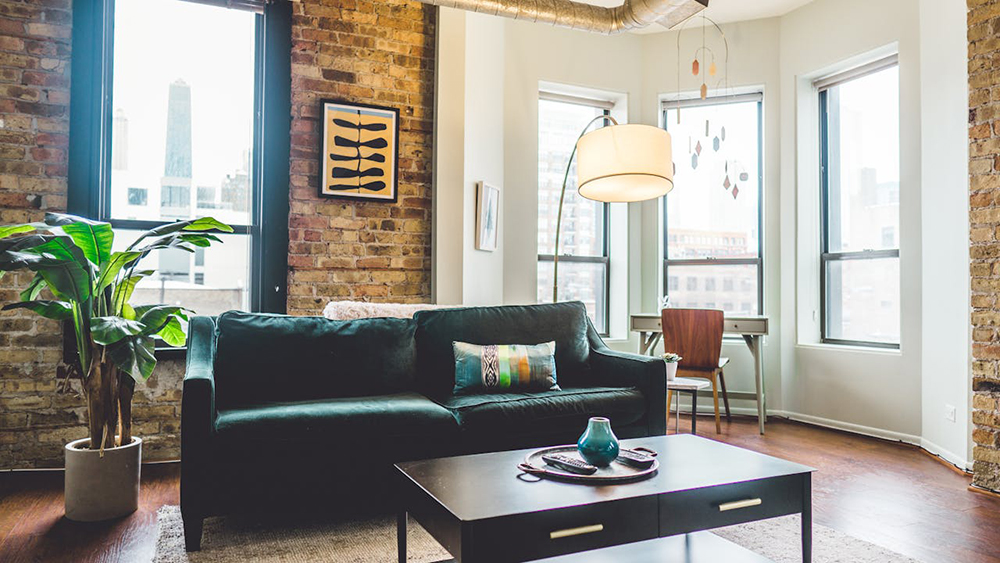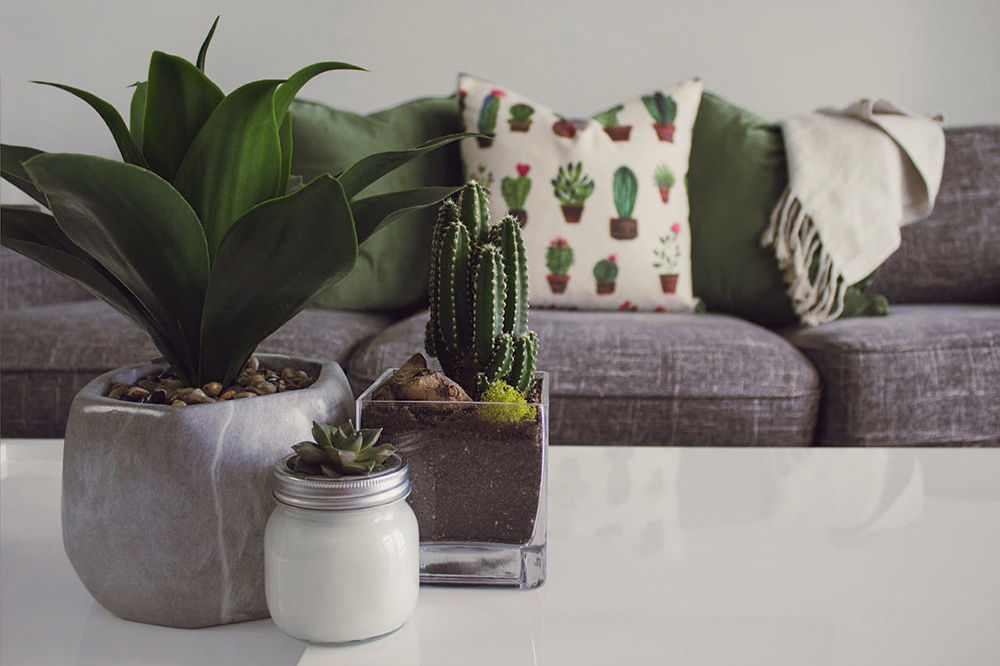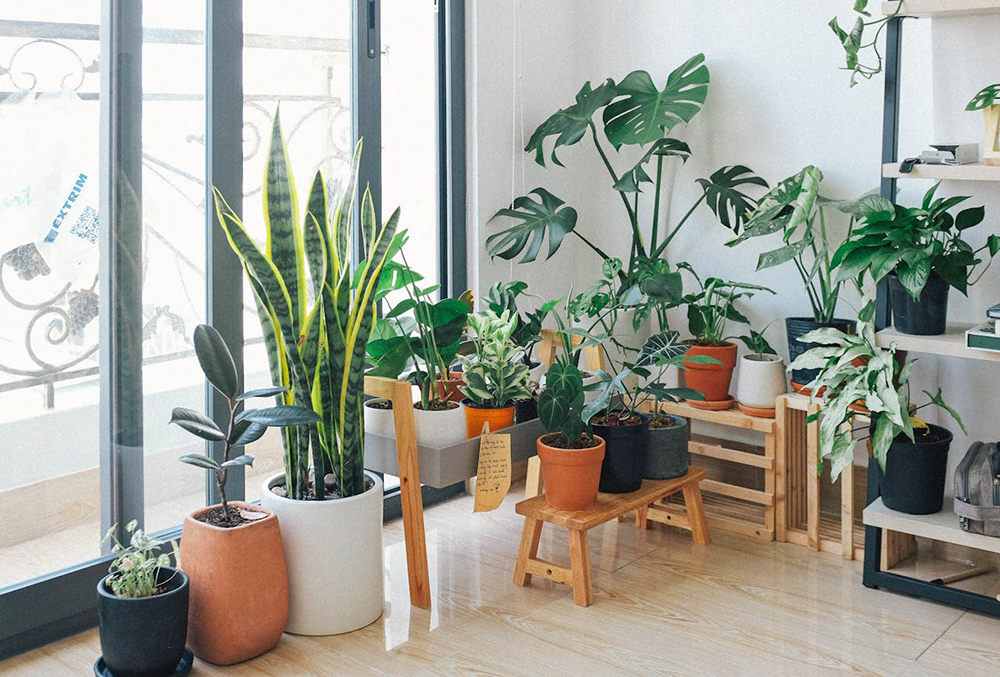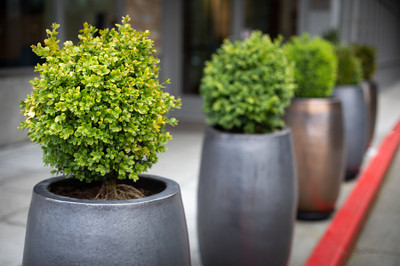Biophilic Interior Design: Bring the Outdoors Into Your Space
Posted by Jason Wyrwicz on Jul 16th 2024
For millennia, humans have thrived in close connection with nature. From the calming rustle of leaves to the energizing sight of a sunrise, our environments have a profound impact on our well-being. Biophilic interior design takes inspiration from this innate human connection, aiming to recreate the restorative and inspiring qualities of nature within our built spaces.
This design philosophy goes beyond simply adding a few houseplants. Biophilic design incorporates a range of elements that tap into our inherent love of life, fostering a sense of calm, boosting productivity, and enhancing the overall aesthetic appeal of an interior.

The Principles of Biophilic Interior Design
Biophilic design isn't just about sprinkling a few plants around your space. It's a philosophy that orchestrates a symphony of natural elements to create a calming, restorative, and ultimately more human-centered environment. Here are the key principles that make up this harmonious composition:
The Natural Environment
Imagine stepping into a sun-drenched office bathed in earthy tones. This principle focuses on bringing the essence of the outdoors in.
Think natural materials like wood and stone underfoot, calming shades of green and brown on the walls, and even subtle artwork depicting animals or natural landscapes. These elements create a sense of familiarity and connection to the world outside.
Natural Shapes and Patterns
Nature isn't about rigid lines and perfect symmetry. Biophilic design embraces the organic and dynamic forms found in nature. Think curved furniture that mimics the gentle flow of a riverbank or textured walls reminiscent of weathered rock formations.
Natural patterns come into play through the strategic use of light and shadow, mimicking the way sunlight filters through leaves or the rhythmic flow of a stream.
Natural Light
Sunlight isn't just about illumination; it's a vital cue for our internal rhythms. Biophilic design prioritizes maximizing natural light, using strategically placed windows and skylights.
In some cases, designers might even incorporate light shelves that reflect sunlight deeper into a space. This not only improves our mood and focus but also helps us feel more connected to the changing light patterns of the day.
Plants
It's no surprise that plants are a cornerstone of biophilic design. From lush living walls to strategically placed potted indoor plants, greenery not only adds a touch of life but also purifies the air we breathe.
Even incorporating plant motifs or natural hues inspired by foliage can contribute to the overall effect. The key is to create a connection between the interior space and the natural world it represents.
The Human-Nature Relationship
Biophilic design goes beyond aesthetics. It's about rekindling a bond with nature that's been ingrained in us for millennia. This principle aims to create spaces that satisfy our innate need for order, safety, and connection.
By incorporating elements like water features that evoke a sense of tranquility or vistas that spark curiosity, a biophilic design allows us to experience feelings of awe and wonder within a built environment.

Benefits of Biophilic Interior Design
By strategically weaving the power of nature into your built environment, you can cultivate a space that nourishes your well-being. Here are some key benefits of incorporating biophilic principles into your interior design:
Reduced Stress and Improved Mental Health
Studies have shown that exposure to natural elements can significantly lower stress levels. Biophilic design can create a calming atmosphere that helps reduce cortisol, a stress hormone and promotes feelings of peace and tranquility.
Enhanced Cognitive Function
Natural light and elements like plants have been linked to improved cognitive function. Biophilic spaces can boost focus, concentration, and even creativity, making them ideal for workspaces and study areas.
Increased Productivity and Well-Being
Biophilic design can create a more positive and engaging environment, leading to increased productivity and overall well-being. Employees in offices with biophilic elements report feeling happier, healthier, and more motivated.
Improved Air Quality
Live plants act as natural air purifiers, removing toxins and pollutants from the indoor environment. This can contribute to better respiratory health and a more comfortable living or working space.
Stronger Connection to Nature
Biophilic design allows us to reconnect with nature even when we're indoors. This can be particularly beneficial for people who live in urban environments, have limited access to the outdoors, or work in an office with no windows.

7 Biophilic Design Strategies
Integrating biophilic design principles doesn't require a complete overhaul. Even subtle changes can create a significant impact. Here are some practical ways to bring the outdoors in:
Opt for Natural Light and Air
Maximize natural light by strategically positioning furniture and utilizing skylights or large windows. Consider light shelves that reflect sunlight deeper into the room, reducing reliance on artificial lighting and creating a more natural light cycle that can improve mood and focus.
Complement natural light with ample ventilation whenever possible. Open windows to allow fresh air to circulate, further enhancing the connection with the outdoors.
Introduce Biomimicry
Draw inspiration from nature's patterns and textures. Introduce organic shapes through furniture with curved lines or natural materials like wood, stone, or woven elements like wicker or bamboo.
These elements can not only evoke feelings of tranquility but can also be surprisingly durable and easy to maintain. Consider incorporating natural textures like rough stone or smooth pebbles to create tactile experiences that engage another sense.
Choose Natural Color Schemes
Opt for natural color palettes that reflect the outdoors. Greens, blues, browns, and earthy tones can create a calming and grounded atmosphere.
Think forest greens, sky blues, sandy beiges, and rich wood browns. You can use these colors for walls, furniture, or accents to create a cohesive biophilic feel.
Consider Living Walls
Take your greenery to the next level with a living wall. These vertical gardens are not only visually stunning but also offer significant air purification benefits.
Living walls can be a great space-saving option, especially in smaller areas. Choose plants that thrive in indirect light for a low-maintenance solution.
Enrich Your Space with Potted Plants
Live plants are a cornerstone of biophilic design. Choose a variety of plants that suit the light levels and humidity in your space. Consider their air-purifying properties and place them strategically throughout the room.
Create a mini jungle with various-sized plants on different levels, or place a single large statement plant in a tree planter in a corner for a dramatic effect. If a green thumb is elusive, consider high-quality artificial plants that can still provide the visual benefits of greenery.
Integrate Sensory Elements
Biophilic design goes beyond just sight. Incorporate elements that engage other senses. Introduce natural scents with essential oil diffusers or fragrant plants like lavender or lemongrass.
Consider the soundscape – calming sounds of nature like birdsong or babbling brooks can be piped in, or strategically placed wind chimes can create a gentle melody when a breeze blows.
Apply Spatial Design
Encourage a connection to the outdoors through thoughtful spatial planning. Frame windows to create living paintings of the exterior landscape. Designate specific areas for relaxation that incorporate biophilic elements, creating a refuge within the home.

Enhance Biophilia with Fiberglass Planters from Pots Planters & More
Looking to enhance the biophilic design of your space with potted plants? At Pots Planters & More, we offer a wide selection of high-quality fiberglass planters that can elevate your biophilic design scheme.
Fiberglass is a durable and versatile material perfect for housing a variety of plants. It comes in a range of styles, colors, and finishes to complement any décor.
Why should you choose our premium fiberglass planters? They are particularly well-suited for larger plants, which have a more significant impact on a space. Their lightweight nature makes them easier to move and arrange compared to traditional ceramic or stone planters. Additionally, fiberglass planters are weather-resistant, making them ideal for placing near windows or in sunrooms.
At Pots Planters & More, you will find a variety of planter sizes and shapes, allowing you to create a cohesive biophilic design throughout your space. Whether you prefer a sleek, modern look or a more rustic aesthetic, you'll find the perfect planter to enhance your biophilic interior design.
FAQs
Is biophilic design suitable for all climates?
Absolutely! Biophilic design thrives on adaptability. In arid climates, drought-tolerant plants and low-evaporation water features reign supreme.
Cold climates can benefit from skylights for extra light and cozy natural materials like wood and wool. Tropical environments flourish with humidity-loving plants and natural ventilation strategies.
Can biophilic design be applied to any space?
Yes! Biophilic principles can be incorporated into homes, offices, schools, hospitals, and even public spaces. The key is to tailor the approach to the space's specific needs and functions.
Can biophilic design principles be applied outdoors?
Of course! Biophilic principles can be used to create outdoor spaces that promote relaxation, connection, and a sense of well-being. This could involve incorporating natural elements like water features, creating pathways that meander through gardens, or using natural materials in patios and decks.
How much does biophilic design cost?
Biophilic design can be budget-friendly. Start small with a few houseplants or natural materials like pebbles or driftwood. Biophilic design doesn't have to be expensive to be effective.



